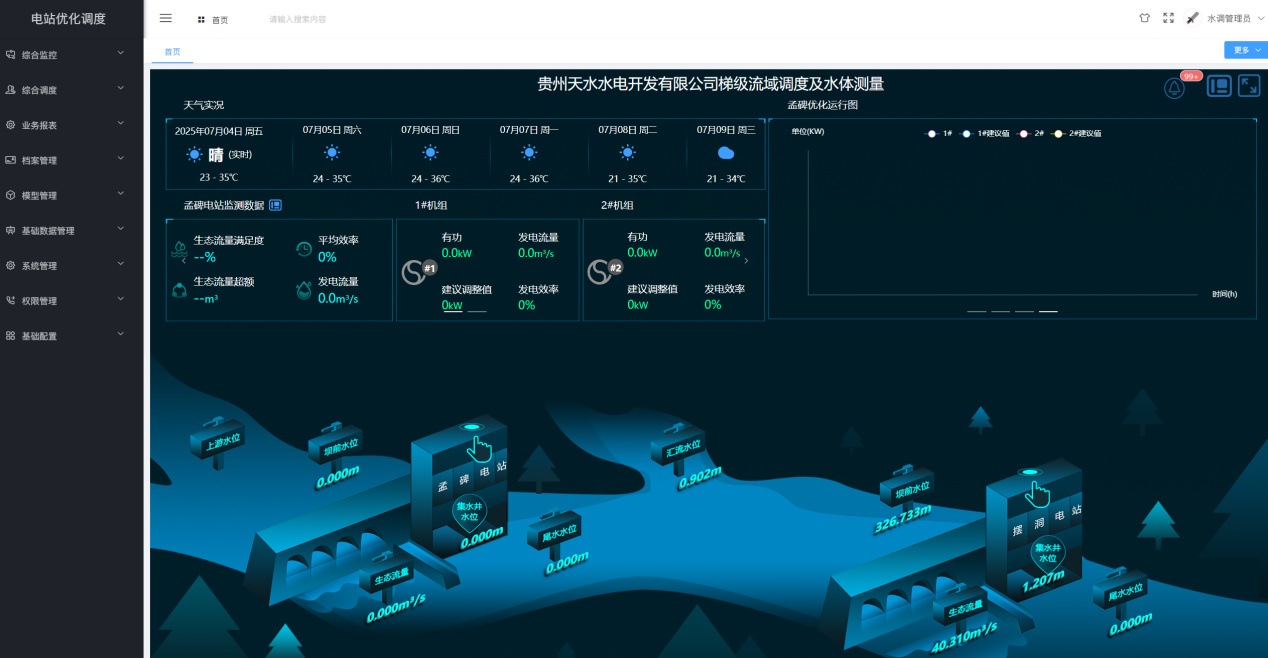Smart Water Management Solutions
Hydropower cascade optimization scheduling and water body monitoring solution for a certain county
I. Project Background
Two river flow power stations in a certain county are connected in cascade, both using axial flow fixed-blade units. The power stations have problems such as low working head, large flow rate, and small water level control range. They also need to release ecological flow for 5 months every year. The traditional manual scheduling method can no longer meet the needs of efficient operation.
II. Current Status of Power Stations
(I) Upstream Power Station
Total installed capacity 2×2000kW, designed annual power generation 18.32 million kWh, no regulation capability.
The dam-front water level gauge is often stuck, cooling water needs manual input, the water level in the collecting well is not automatically monitored, the monitoring system has a high degree of automation, and 3.56m³/s of ecological flow is discharged daily (15 hours).
(II) Downstream Power Station
Total installed capacity 2×2000kW, with daily regulation capability.
The water level gauge is not connected to the monitoring system, cooling water needs manual input, some equipment is malfunctioning, and 4.2m³/s of ecological flow is discharged daily (10 hours).
III. Solutions
(I) Construction Objectives
Establish an optimized scheduling model and install water level gauges and other sensing equipment.
Build a comprehensive scheduling platform to achieve data interaction and intelligent decision-making, and gradually realize automatic scheduling.
(II) Core Modules
Inflow prediction: Determine the inflow through upstream data calculation, river flow measurement, or manual input.
Cascade optimization scheduling: Match unit operation based on inflow and ecological flow for different operating conditions.
Power station optimization scheduling: Automatically adjust the load by setting water level thresholds to maintain high-water-level power generation.
Big data learning: Accumulate data to optimize model parameters.
IV. Benefits
Annual increase in power generation of approximately 1.3128 million kWh, increasing revenue by 328,200 yuan.
Improve water resource utilization rate and ensure safe and efficient operation of units.




